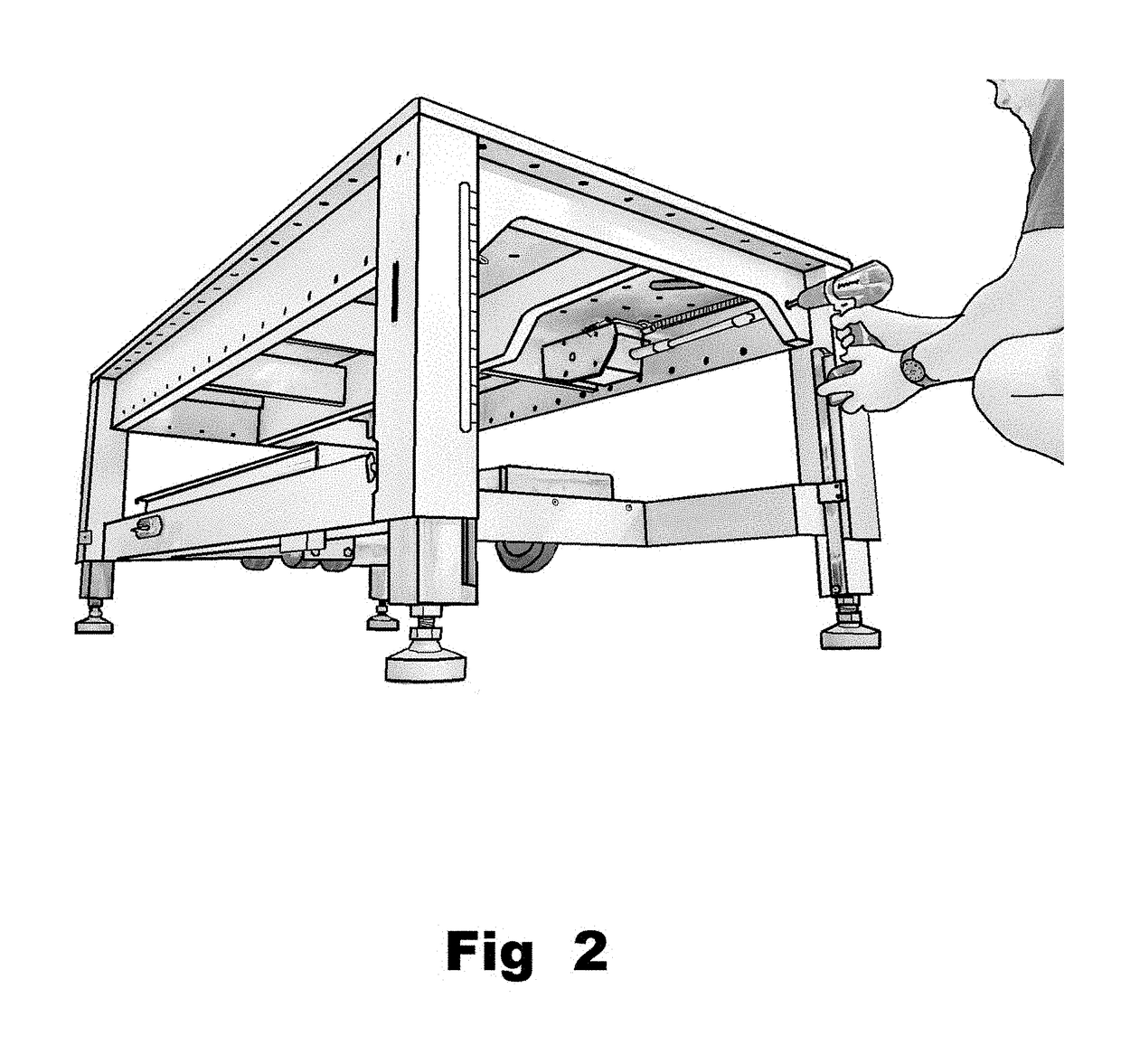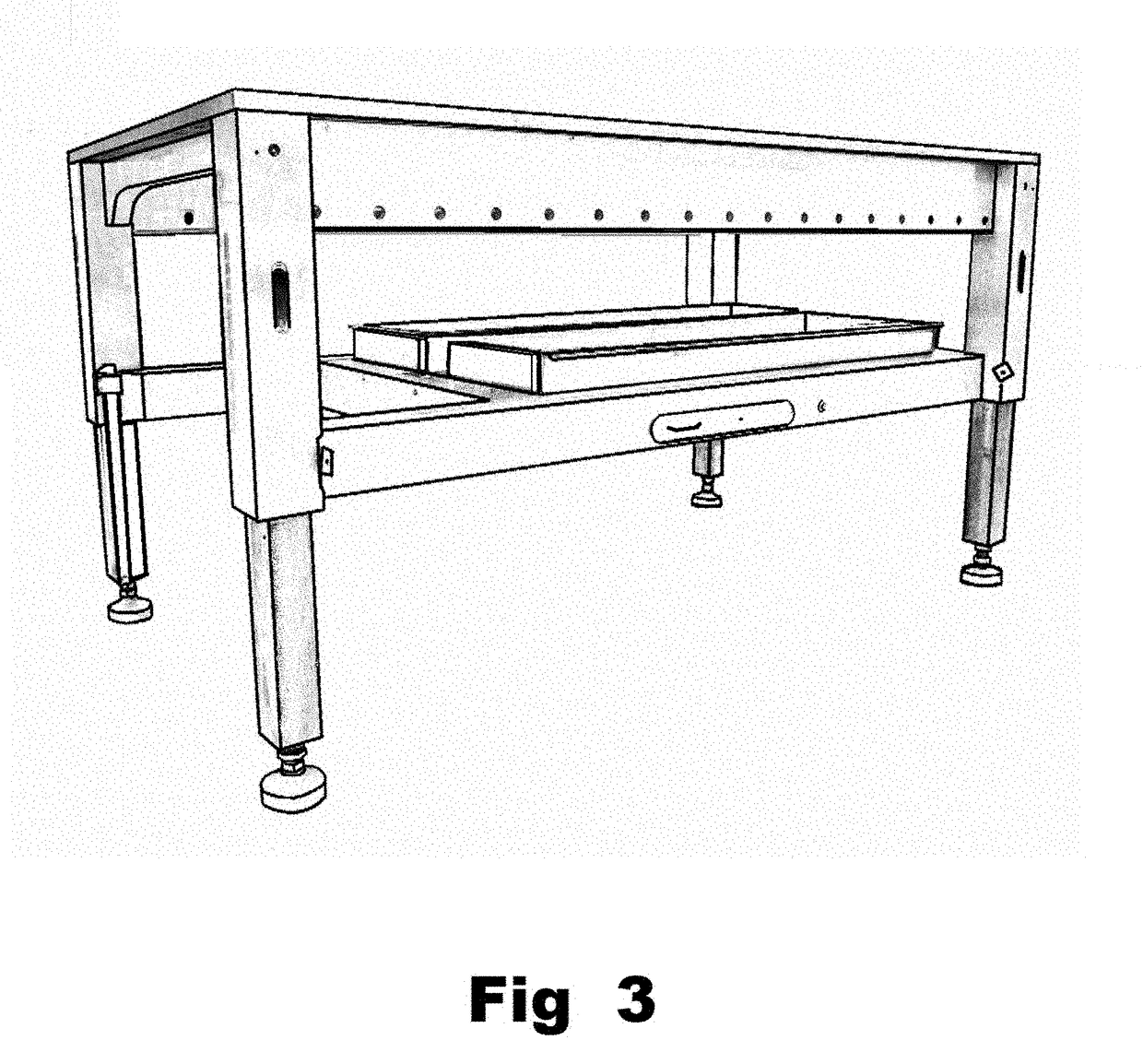Welding Table Elevating and Rolling
a technology for elevating and rolling the welding table, which is applied in the direction of variable height tables, welding devices, soldering apparatus, etc., can solve the problems of limited use of the table like a desk, the inability of the table to accept a common c-clamp, and the inability to move the heavy table. , to achieve the effect of enhancing the overall operation
- Summary
- Abstract
- Description
- Claims
- Application Information
AI Technical Summary
Benefits of technology
Problems solved by technology
Method used
Image
Examples
Embodiment Construction
[0044]The present Invention has a combination of features working in conjunction with each other, all necessary for the overall table abilities.
[0045]FIGS. 1-9 Features overall . . . Part numbers / No
[0046]FIGS. 9-34 Feature detail . . . Part numbers / Yes
[0047]Part numbers will start with 100. The first two digits of a part number dictates the figure number it originated from, although, it may be seen in other figures. Example—part number 198 originates from FIG. 19.
[0048]FIG. 1—Table has the ability to roll using its manually operated, independent folding wheel system. FIG. 2—Table is height adjustable using its independent elevation system, powered with a cordless drill, and works in alliance with the wheel system permitting them to be folded up. FIG. 3—The maximum elevated height of 40 inches is higher than most benches or other work surfaces, enabling precise height matching, within thousandths. FIG. 4—The lowest height of 26 inches is designed for easy loading, low profile usage a...
PUM
 Login to View More
Login to View More Abstract
Description
Claims
Application Information
 Login to View More
Login to View More - R&D
- Intellectual Property
- Life Sciences
- Materials
- Tech Scout
- Unparalleled Data Quality
- Higher Quality Content
- 60% Fewer Hallucinations
Browse by: Latest US Patents, China's latest patents, Technical Efficacy Thesaurus, Application Domain, Technology Topic, Popular Technical Reports.
© 2025 PatSnap. All rights reserved.Legal|Privacy policy|Modern Slavery Act Transparency Statement|Sitemap|About US| Contact US: help@patsnap.com



